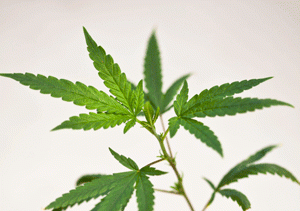Australian cannabis a potent mix
The first systematic analysis of the potency of Australian cannabis has found high levels of the main psychoactive component of the drug in samples confiscated by police.
The first systematic analysis of the potency of Australian cannabis has found high levels of the main psychoactive component of the drug in samples confiscated by police.

The first systematic analysis of the potency of Australian cannabis has found high levels of tetrahydrocannabinol (THC) – the main psychoactive component of the drug -- in samples confiscated by police from recreational users in New South Wales.
The analysis by the National Drug and Alcohol Research Centre (NDARC) at the University of New South Wales, and the University of Sydney, is published today in the international science journal PLOS ONE.
Leader of the study Dr Wendy Swift, Senior Lecturer at NDARC, said there is widespread international concern that cannabis containing high levels of THC is thought to be associated with an increased risk of negative mental health effects.
Australia has one of the highest per capita rates of cannabis use in the world but there has been no routine testing or systematic analysis of cannabis potency, she said. International research over the past few decades has indicated an increase in cannabis potency as measured by THC, as well as very low levels of therapeutic components such as cannabidiol (CBD), which is thought to counteract some of the negative effects of THC.
The authors examined the cannabinoid content of 206 cannabis samples confiscated by NSW Police, seized from recreational users holding 15g of cannabis or less, under the NSW Cannabis Cautioning Scheme. They also examined 26 samples seized by police from large indoor or outdoor cultivation sites.
“While we have suspected for some time that cannabis in Australia contains high levels of THC, this is the first Australian analysis to demonstrate that on average, cannabis smoked by Australians is of similar high potency to that found in studies overseas and that levels of CBD, which can ameliorate some of the harmful effects of THC, remain low, “ said Dr Swift.
“These results suggest that the profile of cannabis currently used in Australia may make some users vulnerable to mental health problems. However, while the high THC/low CBD profile of cannabis has been linked to increased risks for cannabis dependence, increases in treatment seeking and increased vulnerability to psychosis, there is still little research on the impact of potency on these issues, and we need to know more about the factors that affect how people respond to the drug.“
Read the full media release on the NDARC website.
Media contact: Marion Downey, 9385 0180 / 0401 713 850